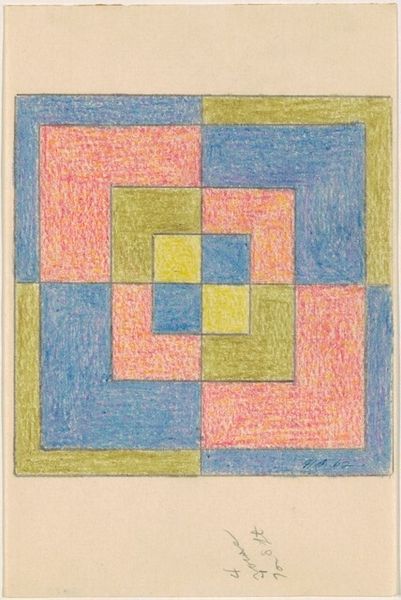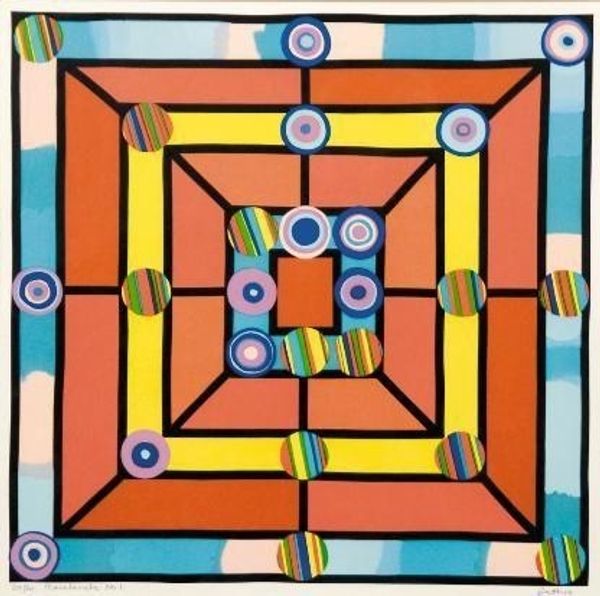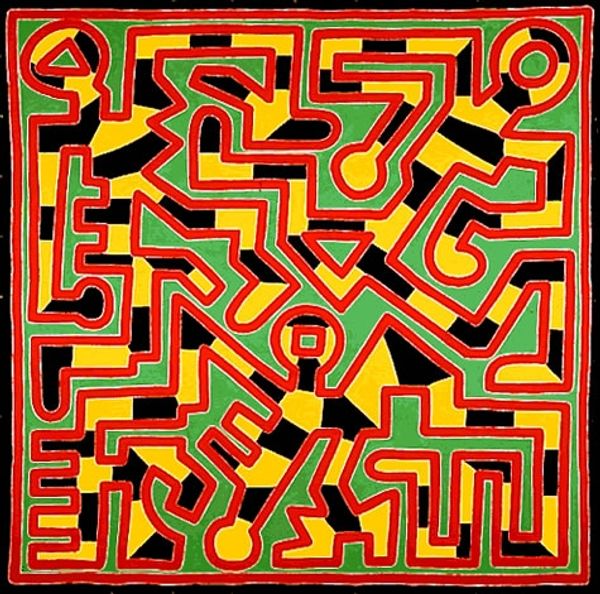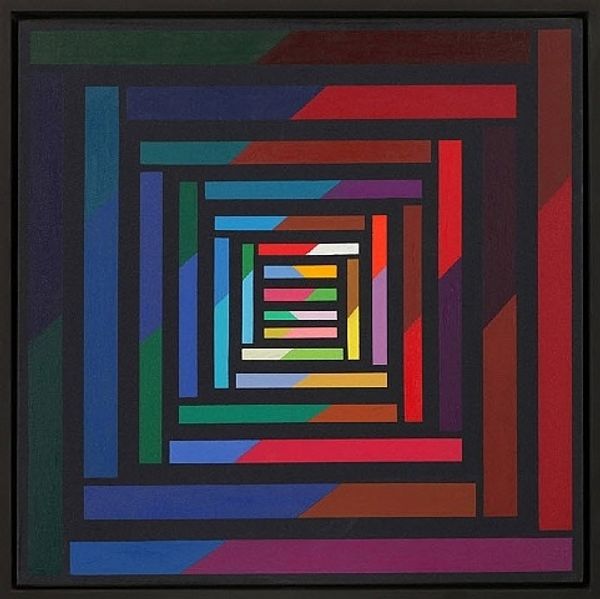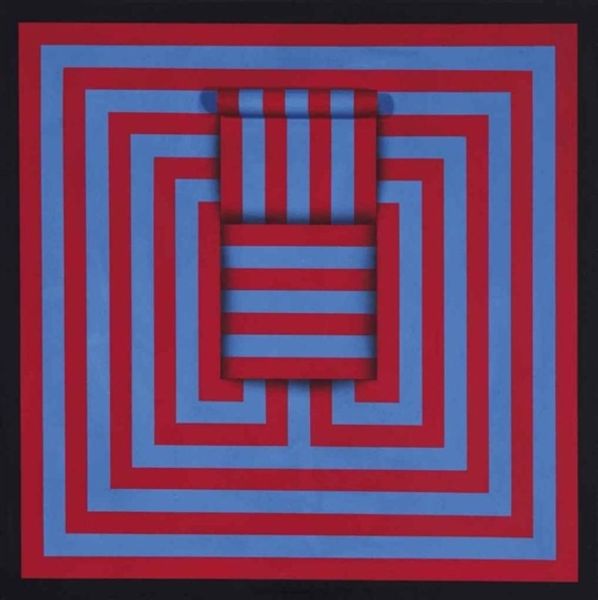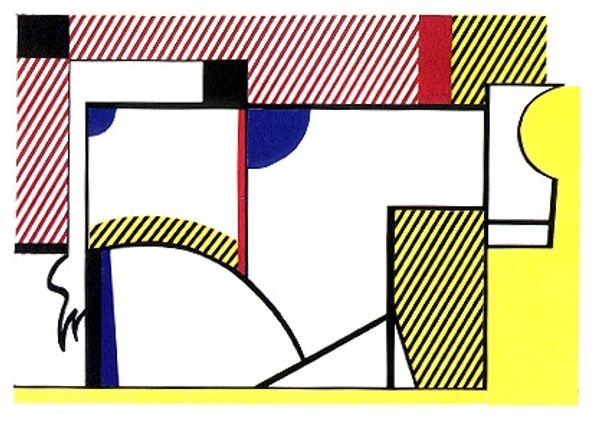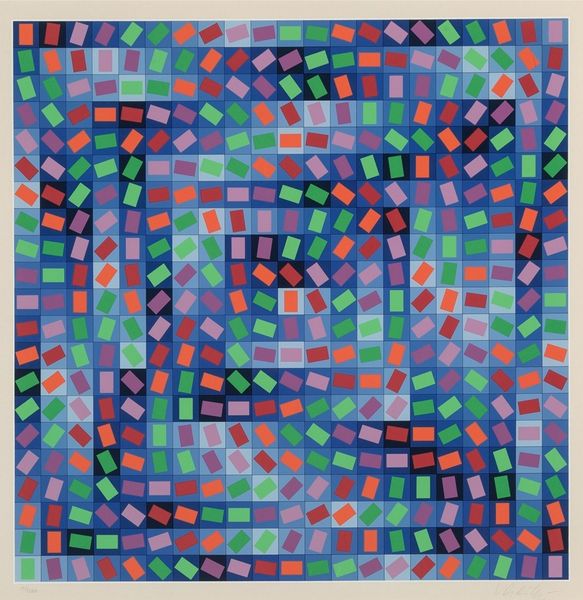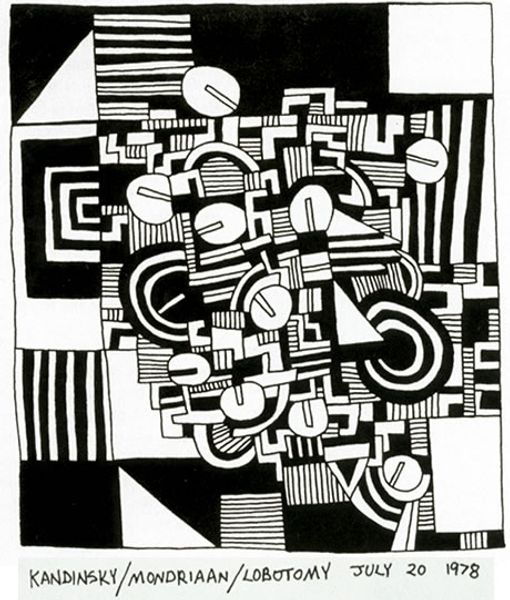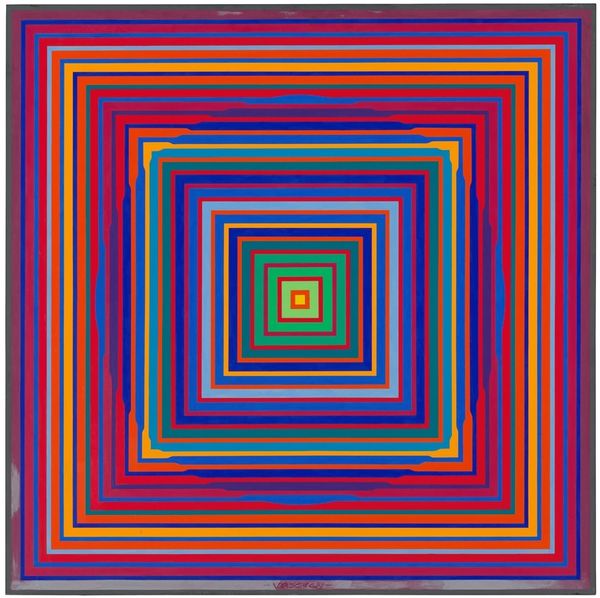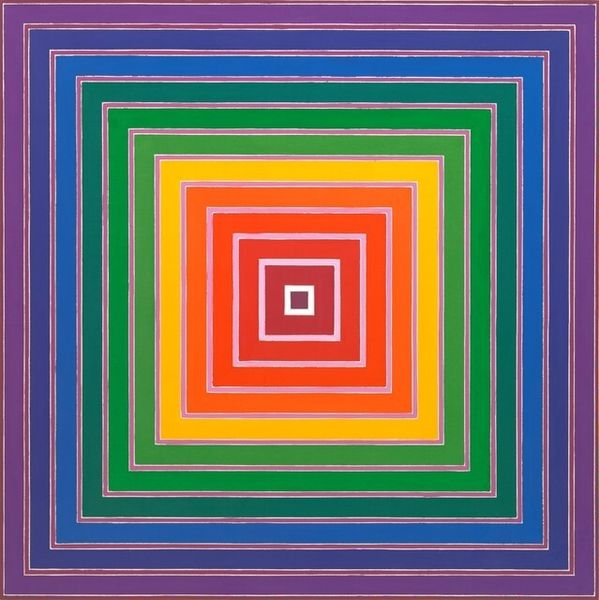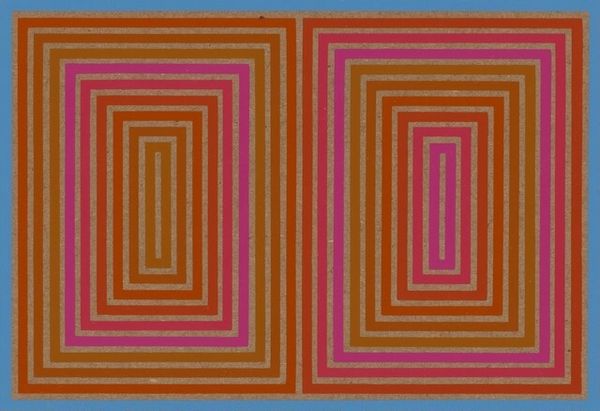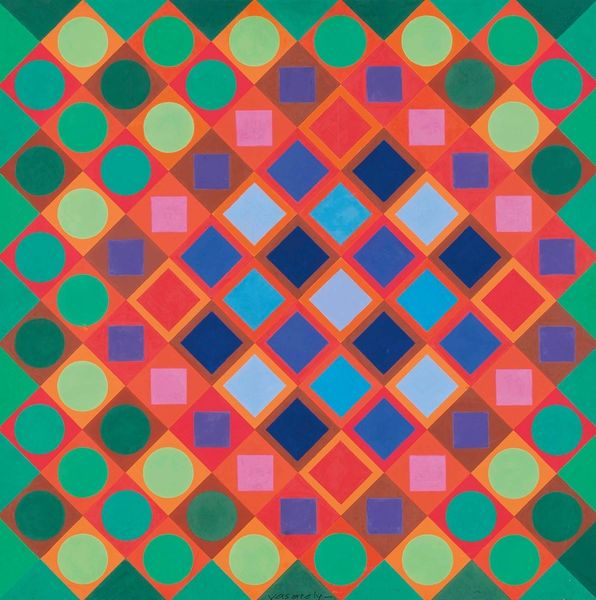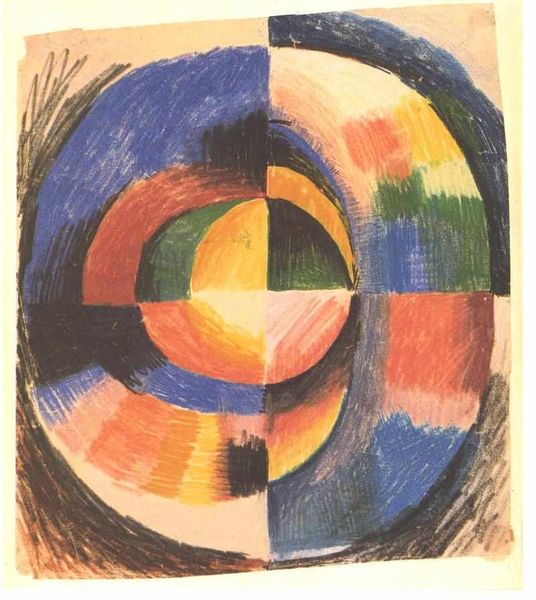
Copyright: Aurelie Nemours,Fair Use
Curator: Aurélie Nemours’ work, “Carré-couronne – Re Rom 337” dating to 1980 presents an intriguing study in form and color. What strikes you upon first viewing it? Editor: Initially, a feeling of entrapment. The concentric squares, each a different bold color, seem to pull you inwards, compressing space as the squares become increasingly smaller. Curator: That compression certainly speaks to Nemours' broader engagement with geometric abstraction as a means to explore social hierarchies. One might see the constricted central square, almost hidden, as representative of marginalized voices struggling to be seen or heard. Editor: An interesting observation. However, I'm more captivated by the pure optical experience. Look at how the colors vibrate against one another, blue against yellow against red. The composition explores pure relationships of line and color. Curator: True, but can we separate form from context? Nemours' choices-- the limited color palette, the unforgiving hard edges of each square-- these aren't just aesthetic choices. They mirror the constricting, often rigid structures of societal power. Consider, for instance, that hard-edge painting as a movement has historically struggled for acceptance in comparison with some of its more "expressive" cousins. Editor: Perhaps. But isn't there beauty in simplicity? The artist strips away the superfluous, leaving us with the essential elements. Through this act of reduction, Nemours encourages the viewer to concentrate on line and hue and spatial balance. Curator: And through that act of reduction, Nemours is asking the viewer to examine what gets lost when experiences are reduced to essentialisms; who gets erased. We can consider what it means to impose such severe geometry on something as fluid as the human experience, especially when viewed through prisms of gender and racial identities. Editor: A compelling argument, reframing the artist's choices as a powerful visual statement regarding societal strictures. It does push my perspective toward social engagement with art, revealing a deeper, almost radical purpose, as a challenge. Curator: Exactly, and by investigating these elements together, we uncover its lasting potency and relevance, so let us all leave challenged to question essentialisms! Editor: And from a compositional stance, considering how formal decisions and their implications can have unexpected reverberations across diverse social, historical, and individual readings adds immeasurable value.
Comments
No comments
Be the first to comment and join the conversation on the ultimate creative platform.
